#wild food
Text

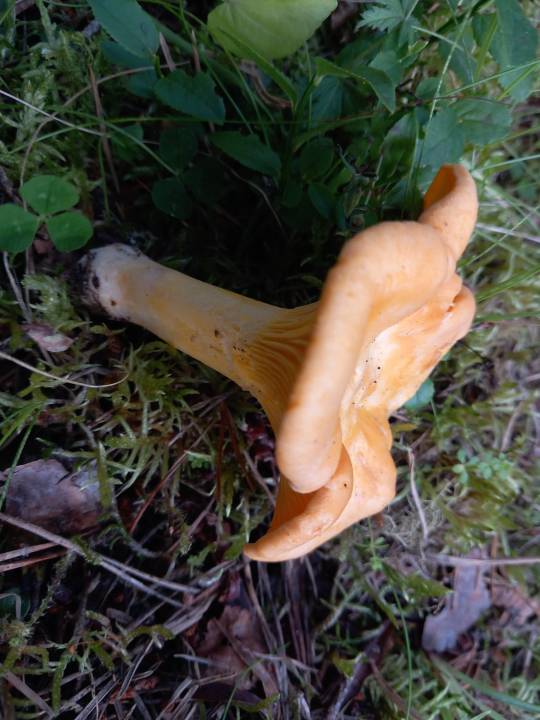
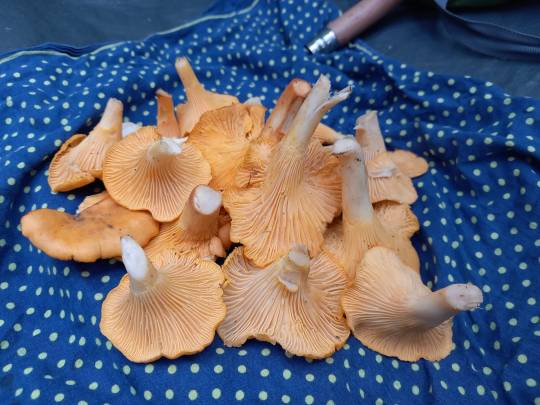

Abernethy Forest, Scotland, UK, August 2023
Chanterelles (Cantharellus cibarius)
I've been hiking and wild camping in Scotland's gorgeous ancient woodland and have found SO many amazing mushrooms - I can't wait to sort through pics and post for you all to see!
Most excitingly though, I found LOADS of chanterelles, which I've only ever found one or two of before. I gathered a potful (more than pictured here, and still leaving most of what I saw) and they made an amazing addition to my campside ramen. Tonight some more will go in a pasta sauce, then I'm planning a risotto for the rest :)
These mushrooms are delicious and highly sort after. They can be recognised by their irregular caps, apricot smell, veins on the underside rather than true gills, and white flesh which can be seen when they're cut in two.
There are two main potential confusions to be aware of:
Jack o Lanterns (Omphalotus olearius) - these are similarly sized orange mushrooms which might be mistaken for chanterelles at first. However, they clearly have gills on the underside rather than veins. These fungi are poisonous.
False chanterelle (Hygrophoropsis aurantiaca) - these are a more plausible confusion, as the name suggests. They have true gills, but they look a lot like the veins of the chanterelle.
They can be distinguished from 'true' chanterelles by their yellow-orange flesh when they are cut open, their lack of apricot smell, their darker cap centres and more regular caps. The best way to distinguish them is to cut them in half - you will see the colour of the flesh, and also whether there is a margin between the cap flesh and the gills. True chanterelles do not have this, whereas false chanterelles will show that the gill is separate to the cap. Young chanterelles and false chanterelles really do look quite similar, so be careful! Luckily, false chanterelles aren't seriously poisonous - they produce the symptoms of mild food poisoning, and there are some dubious reports of psychedelic effects.
#fungi#mycology#chanterelles#foraging#wild food#edible fungi#Cantharellus cibarius#food#vegan#orange fungi#potential confusions
242 notes
·
View notes
Text
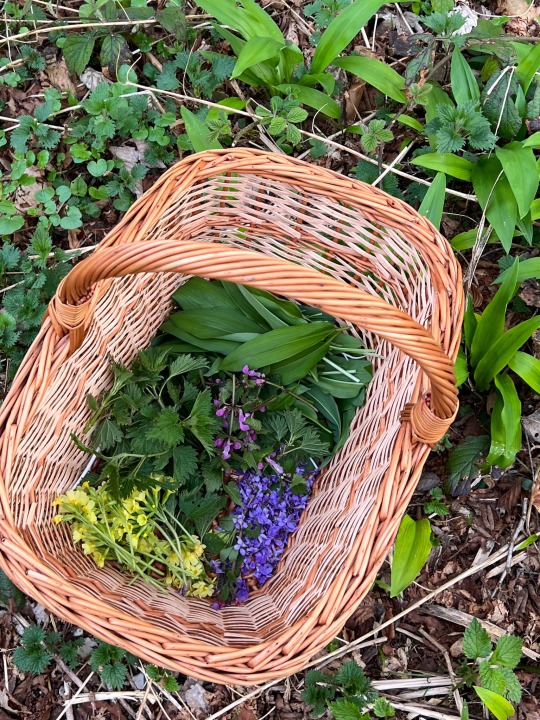
Though I was raised Catholic, I haven’t associated with the religion for most of my adulthood. That being said, it’s really important to me to continue to practice the culture and traditions I grew up with, even though so much of it is tied into Catholicism.
Easter is tomorrow, and while my family is coming together to celebrate it, I am considering it a celebration of Spring and the abundance of the new season. I am preparing today by foraging and putting together a menu of the delicious foods I will prepare today and eat tomorrow with my family.
Here is what I’ve gathered: wild garlic, purple dead nettle, stinging nettle, lungwort, primrose, and wild violets. I’m excited 🌸
49 notes
·
View notes
Text

#photographers on tumblr#original photographers#nature photography#forest#berries#woods#forestcore#witchy#dark#leaves#wild food#blackberry#summer#woodland
56 notes
·
View notes
Text

Nettle Bread Rolls with Lemon and Tarragon (Vegan)
#vegan#appetizer#easter#bread#diy#bread rolls#stinging nettles#wild food#lemon#tarragon#yeast#rye flour#oat flour#spelt flour#olive oil#agave nectar#sea salt
45 notes
·
View notes
Text

park picnic (2023)
#art#artists on tumblr#mixed media#collage#acrylic painting#colored pencil#traditional art#plant art#botanical art#plants#mushrooms#fungi#foraging#mushroom art#wild food#wormart
82 notes
·
View notes
Text
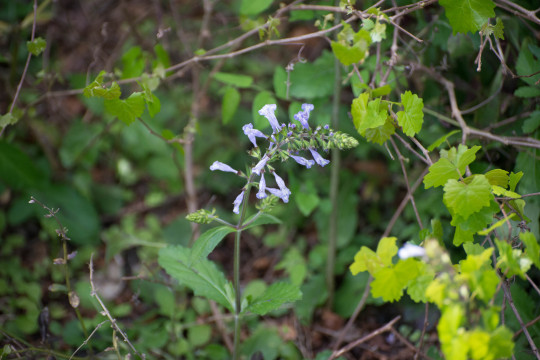



Four edible plants native to Florida.
Salvia Lyrata, or Lyreleaf sage, a plant historically used by natives for medical purposes, is used for teas mainly. I haven't tried it but the whole plant is edible.
Stachys Floridana, or Florida Betony is a beautiful wildflower that produces white tubers that look a bit like grubs but taste almost like radishes, crispy and fresh.
Sambucus Nigra, or Elderberry /Elderflower depending on what stage it's in, is used for a nice tea in the flowering stage and syrups and jellies are made from the berries. They're also nice to look at.
Smilax auriculata, or Earleaf Greenbrier is pictured here, but all species are edible and have the same basic look. These are considered a nuisance by a lot of gardeners but they're my favorite from this list. The soft new growth at the end of vines look like asparagus and taste just as good in my opinion, which is where one common name, wild asparagus, comes from. In the spring you can eat whole meals of this stuff right off the plant just walking down a hiking trail, all you have to do is snap it off right where it wants to and chow down
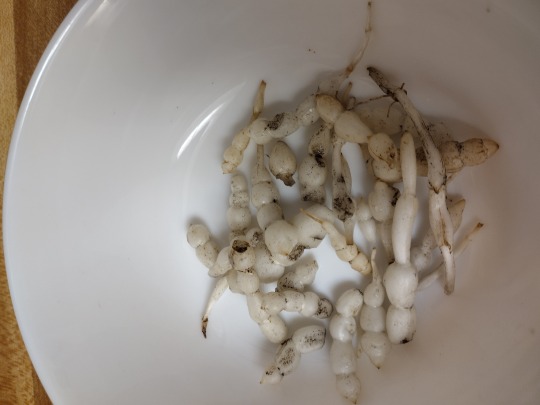

#nature#photography#original photographers#photographers on tumblr#florida#cottagecore#flowers#edible plants#education#native plants#wild food
18 notes
·
View notes
Text
Up Hickory Hollow
The massive shagbark hickory that gave Hickory Hollow its name when I was a child fell a long time ago, but there are still plenty of hickory trees there, and we still call it that.
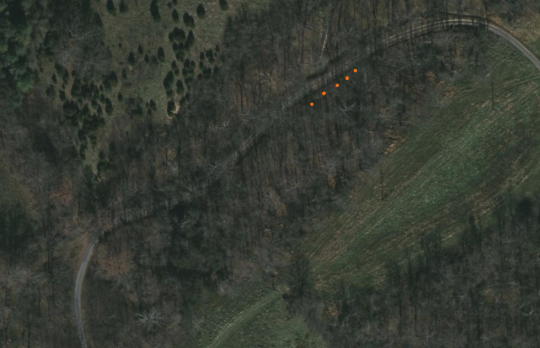
It is, roughly, an area of somewhat scruffy woods about 50 yards wide by 150 yards long, and a gravel road winds through it. That's where we've been cutting firewood (the orange dots), and where I found the oddball shelf fungus recently.
Further up, across a field and a bit beyond this map, is a huge sinkhole. The kind that could have swallowed a house. It used to be part of a pasture, when my father had cattle. Now it has mature trees growing in a ring around it, and lines of trees from the 2020 planting (with "tree tubes" to protect them) stretching away on either side.
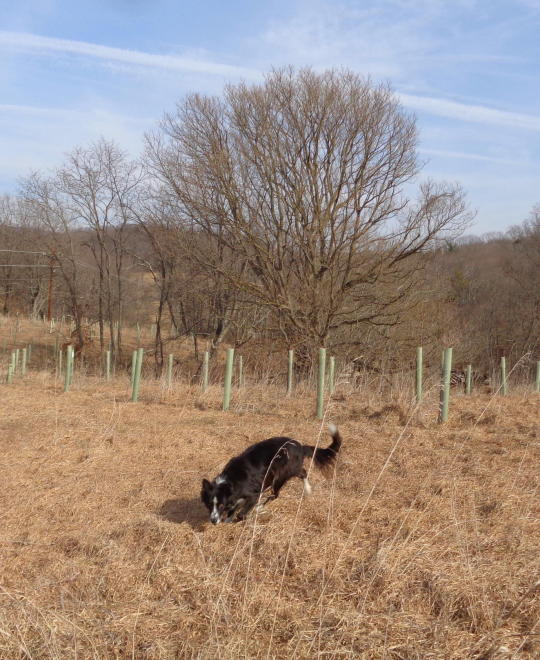
Where the land seems to dip, there, is actually a big hole that *must* be connected to a cave system of some kind, but it's too dangerous to poke around the bottom. It could collapse further with no warning. The smaller trees on the left are a group of about 5 persimmons. Diospyros virginiana, to be precise. They are wild, the fruits are much smaller than the domesticated ones you see in the market, and only edible after frost.

The grass is too tall under the trees to find the dropped ones easily. Hmm.

Bit by bit, she shinnied up there until she could shake the branches. Then I had to scamper about picking up the fruit. The fact that they're ugly does not mean that they are spoiled.

Inside, they are a deep orange color, mushy texture, and very sweet. Most of them will be left for the wildlife. I wouldn't mind getting some more trees started, though, and encouraging them to keep their lower limbs so they're more climbable.
The wikipedia article is a wild ride. Look for the part about persimmon bezoars!! eEEee
37 notes
·
View notes
Text
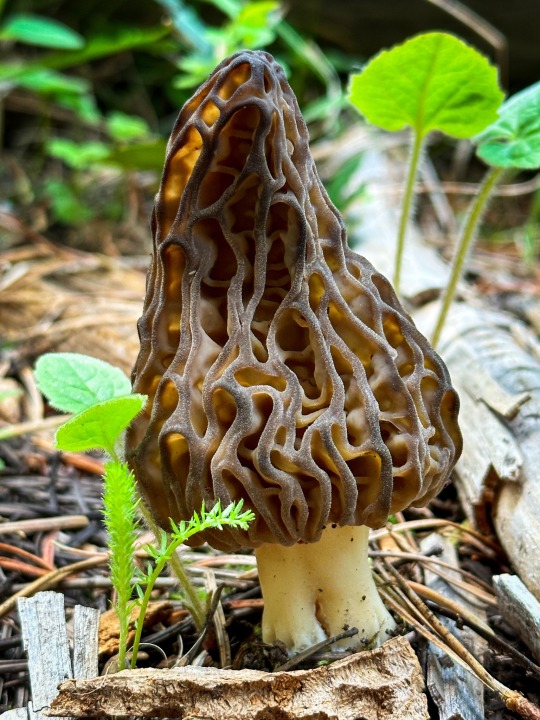
It’s that time of year again 🍄
#morel#morels#morel mushroom#edible mushrooms#foraging#mushroom#mushrooms#wild food#photography#macro photography
93 notes
·
View notes
Text




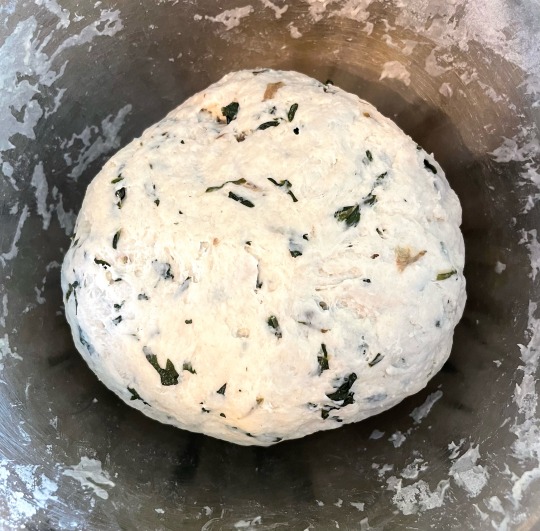
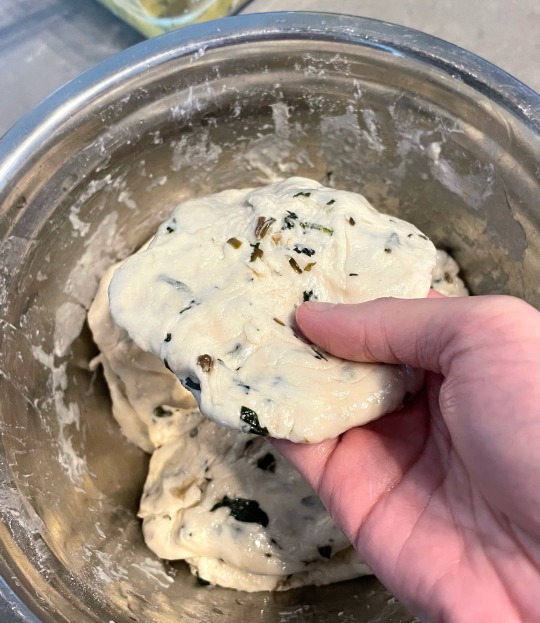


Dandelion Pulled Noodles.
It just needs flour, salt, water, oil, and PATIENCE to make.
Dandelions are naturally bitter regardless of when and where you pick them. To rid the bitterness, you need to blanch them in boiling water for 5 minutes, then soak them in cold water for at least 6 hours; change the water 1-2 times in between. Then finely chop the dandelions.
Once the green is ready, making the noodles is pretty straightforward.
1. In a mixing bowl, combined 2 cups flour, 1 tablespoon salt, chopped dandelion. Then slowly add water and form the mixture into a slightly stiff dough (the dough won’t be smooth, so no worries). Cover the bowl with damp cloth and leave it for 1 hour.
2. Drizzle 1/4 cup vegetable oil over the dough. Divide the dough into smaller portions (about the size of a tennis ball), and flatten them. Make sure both sides of each cover with oil to seal the moisture. Cover the bowl and leave it for 2 hours.
3. To cook, boil a pot of water over high heat. When it’s boiling, pull the dough into bite size and add it to the water. Cook until they float to the top. Serve the noodles with your favourite soup base.
I hope you enjoy this spring recipe.
#dandelions#dandelion greens#spring plants#wild edibles#wild food#healthy#wild plants#handmade#noodles#digestivehealth#forager#foraged food#foraging#kitchen witch#witchy#green witch#herbs#recipes
12 notes
·
View notes
Text
I’ve been out foraging with a borrowed camera, so here’s some edible/medicinal plants you can forage for even in December (if you’re not snowed in).

Clover flowers, they’re edible and you can put them into meals and soups, but never eat a lot at once! They have a lot of estrogen so they can mess with your hormonal levels if you take a lot.

Daisies, they’re medicinal! You can eat them and make tea with them. You can eat both the flowers and the leaves.
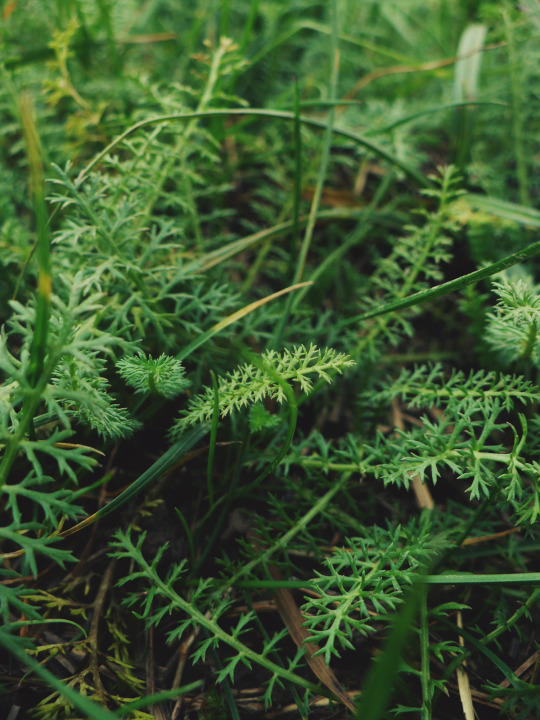
This is how Yarrow looks in the winter; in the summer it grows tall with clusters of little white flowers, in the winter it’s very ground-level, but the leaves look just the same. It’s still edible and medicinal even when it’s just leaves, and you can add it to salads and soups.

Dead nettle, it’s good for immune system boost! It’s edible and can be made into teas, it doesn’t sting unlike the stinging nettle, and it grows pretty purple flowers. (I’ve never tried to eat it because the scent is so strong I’m lowkey scared of it)

Rosehips, they’re filled with vitamin C and good to make jam and tea out of. Also a great immune system boost.

Plantain, it has a nice nutty flavour to it, and it’s recommended as a plant to make your blood stronger. It’s also a medicinal plant that helps wound healing!

Dandelion greens are still up even when they’re not flowering! They’re so high in vitamin C, they could get you nourished thru the winter even they’re all you eat. They’re a bit acidic but if you add them to a potato or bean salad they hit just right.

Stinging nettle is still around, it will get smaller after the frost hits, but it’s still a great source of calcium, iron, energy, overall one of the best plants you could possibly add into your diet. You can collect the seeds too and consume them as an addition to dishes!

Chickweed, also a great source of minerals and vitamins! And it tastes amazing, you can use it instead of lettuce and I’d say it tastes even sweeter. Few sources have said that if you have too much of it, it can make your tummy ache, but I have disregarded this and consumed this plant in big quantities and remained unharmed.
Even if you can take the foraged plants only in small quantities, because they’re fairly small and it would take a long time to gather a lot, they’re so much richer in vitamins and minerals than the plants we usually eat, they can serve as a supplemental source of nutrition, and make sure you’re properly nourished and healthy thru the winter.
#foraging#winter foraging#wild edibles#wild food#medicinal plants#edible plants#foraging in december#i had a great time outside with a camera#i love knowing about the plants
173 notes
·
View notes
Text




I've been slowly building up small stores of wild preserved food over the last year to use through the winter - I'm going to try next year to have about 10% of my food be wild or gardened (I'm moving to a place with a garden!!)! This is a very small target for some people, but we start somewhere :)
This is a delicious meal that I made with sauce from Hawthorn berries. I haven't used them before and was excited to find a new way to preserve vitamin c for throughout the winter. It was delicious! As I was making it, I noticed it tasted a lot like hoisin sauce, so I decided to fry up some oyster mushrooms with the sauce and make a sort of faux vegan hoisin duck pancake with cucumber and spring onions and chilli oil (in this case with gluten free wraps so my husband can eat it too). It was so good!! I'm definitely going to invest a lot of time in harvesting more hawthorn berries next autumn.
#not fungi#except the oyster mushrooms but they're not really the star here#foraging#wild food#food#vegan#hawthorn berries#hawthorn
140 notes
·
View notes
Photo
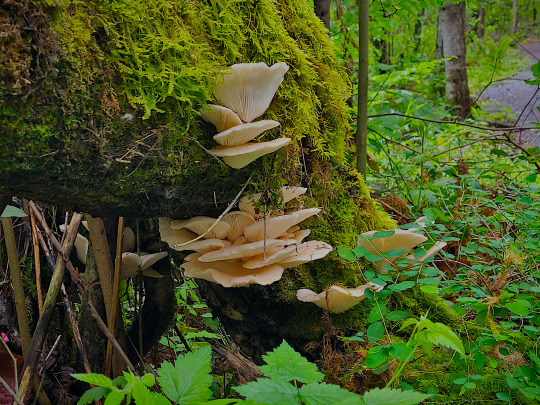

Oyster Mushrooms
Pleurotus sp.
Western Washington
Mary Howerton (shop)
#mushrooms#fungi#fungus#shrooms#mushies#oyster mushrooms#mycology#nature#foraging#wild food#original photography#photographers on tumblr#lensblr#nature photography#dirtcore#forestcore#fairycore#cottagecore#goblincore#mosscore
485 notes
·
View notes
Text

Posters and more on Zazzle
#nature photography#original photography#photographers on tumblr#mushrooms#fungi#edible fungi#wild food#forest#woods#forestcore#moss#autumn#foraging#mycology#fall aesthetic#nature
121 notes
·
View notes
Text
Desert Lilly a.k.a Indian Radish


Been a while since I've seen one.
#art of bushcraft#outdoorlife#outdoors#bushcraft#my art#art#ways of old#knowledge is the best survival gear#ways of survival#wild food#wildflowers#wild edibles#foraging
11 notes
·
View notes
Text
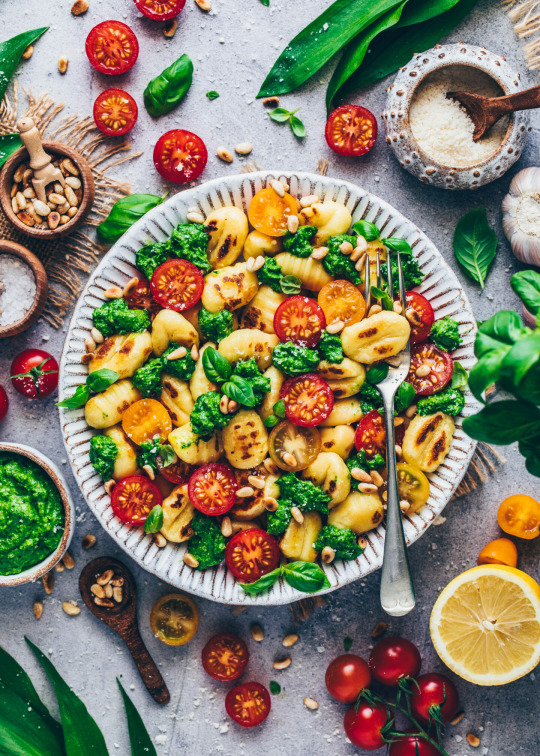
Vegan Gnocchi with Wild Garlic Pesto
#vegan#lunch#dinner#pasta#gnocchi#sauces#pesto#wild garlic#wild food#parsley#sunflower seeds#pine nuts#lemon#nutritional yeast#olive oil#black pepper#sea salt#tomatoes#basil#vegan parmesan#💚
34 notes
·
View notes
Text
Look at the size of the acorns this year.


I love fall
21 notes
·
View notes